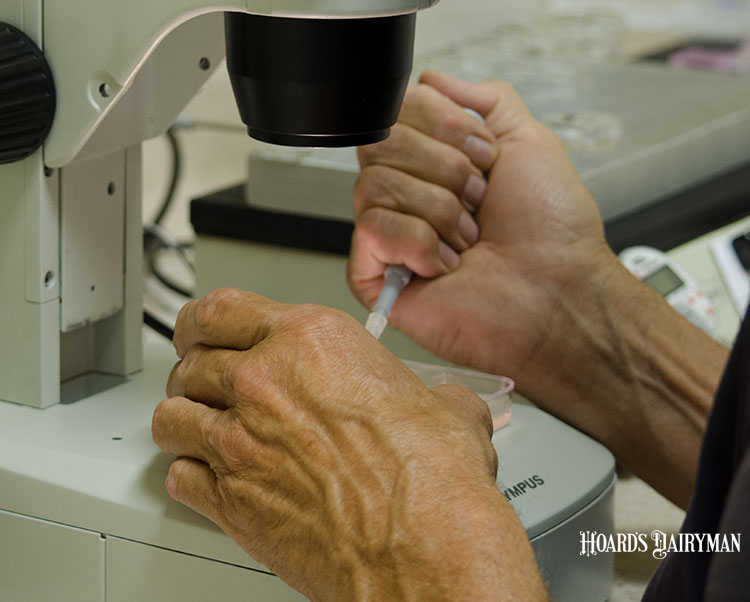
Believe it or not, biotechnologies in the area of reproduction have been around for more than a century. Veterinarian Cesar Narciso started off his presentation at the Dairy Cattle Reproduction Council (DCRC) annual meeting in Reno, Nev., with a brief history of these developments.
Narciso, who works at Sequoia Veterinary Services Inc. in Tulare, Calif., shared that the first successful embryo transfer took place in England with a rabbit in 1890. Artificial insemination was first used in Russia in 1900, and the first in vitro fertilization (IVF) embryo was produced from a rabbit in 1959. The first IVF human was born in 1979, and the first IVF calf came along in 1981.
Focusing his talk on IVF, Narciso explained that the process includes three steps: in vitro maturation (IVM), IVF, and then in vitro culture (IVC). Together, these steps complete in vitro embryo production (IVEP).
The entire process takes about eight days. In a very simple overview, oocytes are retrieved from donor cows or heifers through ovum pick-up (OPU). Select oocytes are placed in a petri dish with IVM media. Next, semen is used to fertilize the oocytes. Fertilized oocytes, or zygotes, are transferred to the IVC. At the end of the process, the embryos are given a grade according to quality factors and are either implanted or frozen.
Narciso pointed to some advantages of IVF, including accelerated genetic gain by using genomically superior donors, strategic reproduction management (like crossbreeding or breed switching), and the possibility to use sexed semen at a larger scale.
A secondary advantage is that IVF can be used to retrieve embryos from females that fail to respond to superovulation treatment. One can also salvage genetic potential of terminally ill females and produce embryos from pregnant and non-pregnant cows.
He also shared some disadvantages of IVF, including a higher cost per pregnancy and live birth, more embryonic losses, greater abortion rates, lower offspring viability, and special care needed for high-value cows and offspring.
Narciso explained that implementing a full IVF program on a dairy is very complex.
Ideally, he said a farm should focus on managing donors and recipients through proper facilities and diets and leave the embryo handling to an IVF lab. Still, he believes IVF practices have improved greatly over the past two decades, making them more accessible and cost effective for cattle producers.








